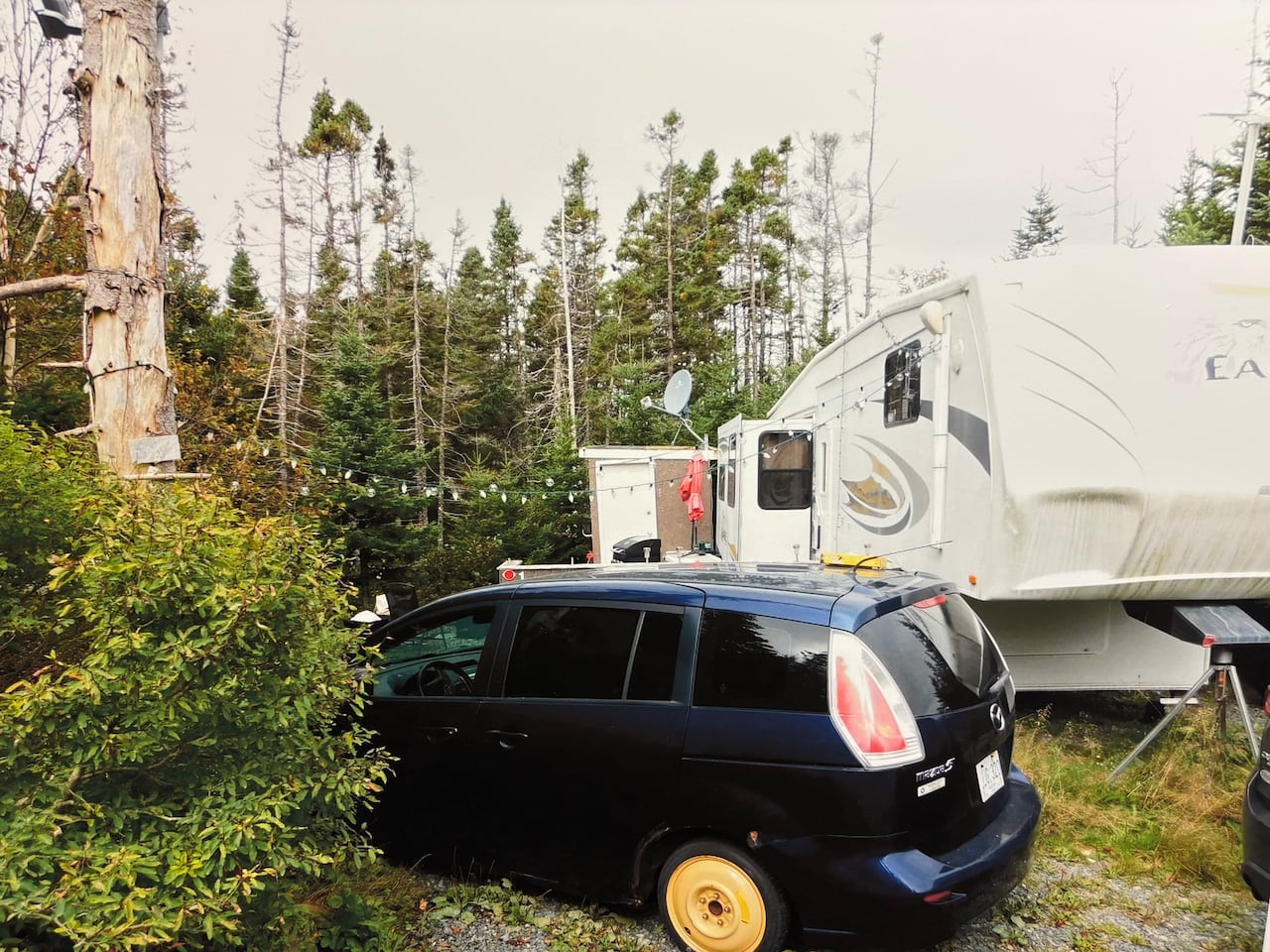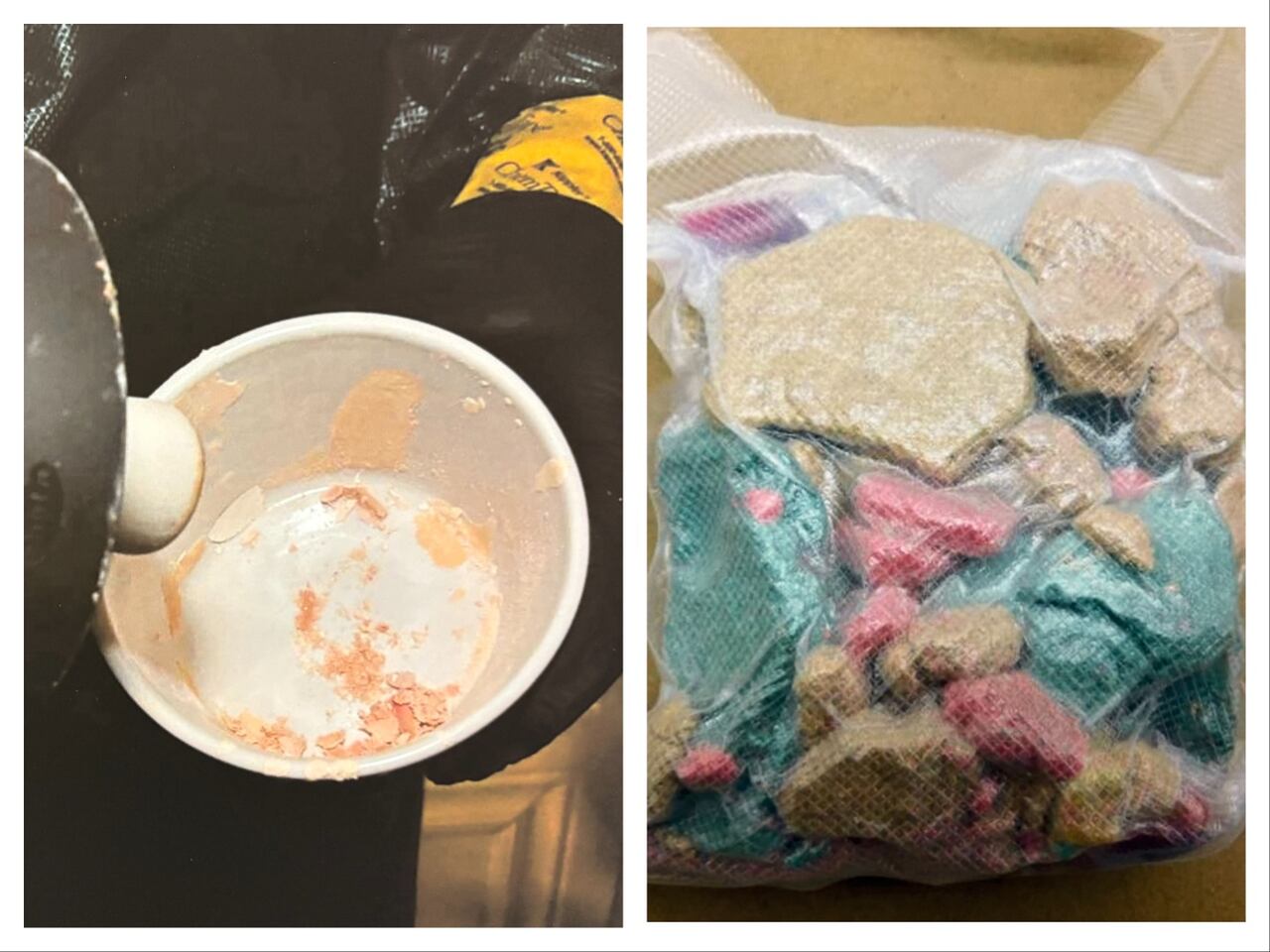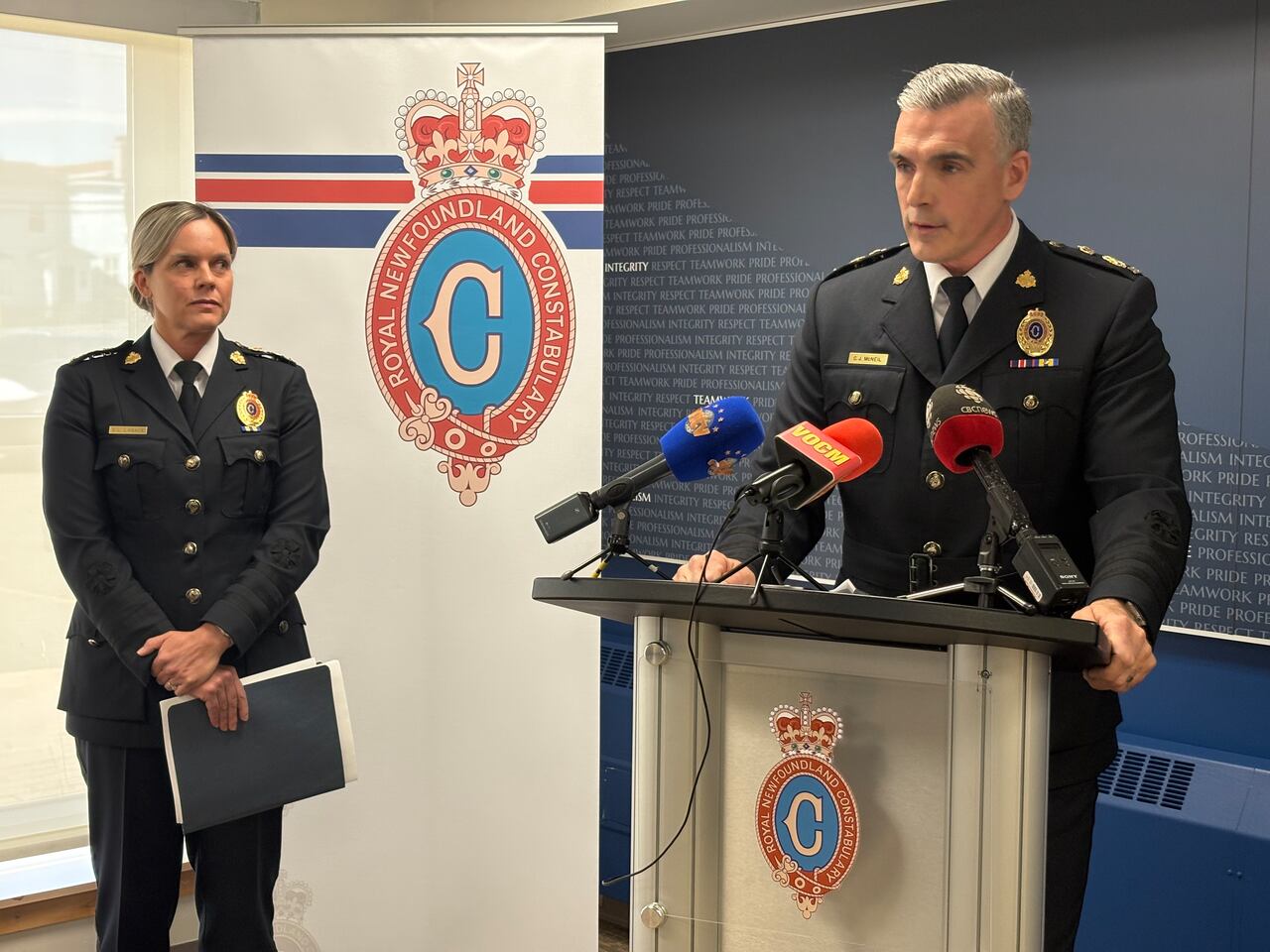The Royal Newfoundland Constabulary revealed on Wednesday the specifics of a major drug trafficking operation they claim is the biggest in provincial history.
The September operation turned up an array of illicit drugs — including 500 grams of fentanyl, which the police force says is enough of the deadly opioid to kill nearly half of Newfoundland and Labrador.
Investigators said counterfeit prescription opioids and other pills were being manufactured in a trailer in the west end of St. John’s, where two people were allegedly mixing fentanyl, carfentanil and other synthetic opioids with other substances and pressing them into pills that resembled Dilaudid and Percocet.
Laboratory results show the substances seized from that trailer included:
- Over 500 grams of fentanyl,
- Over 500 grams of methylfentanyl,
- More than 250 grams of fentanyl and other fentanyl analogues which include carfentanil, acetalfentanyl and fluorofentanyl,
- More than 950 grams of cocaine,
- More than 300 grams of crystal meth,
- More than 2,000 prescribed medications such as clonazepam, methylphenidate, oxycodone, lorazepam, benzodiazepines, hydromorphone, morphine, alprazolam, amphetamine, codeine, and diazepam.
Police say they also seized firearms and drug manufacturing equipment.
Emma Murphy, aged 24, along with Martin Marks, who is 29, jointly confront more than 80 accusations related to manufacturing, possession, drug trafficking, and weapons offenses.
Chris Somerton, 27, was charged with trafficking, possession for the purpose of trafficking and possession of property obtained by crime.

Deputy Chief Colin McNeil said police believe Murphy and Marks worked “closely together, side by side,” while Somerton was considered a drug runner.
He told reporters Wednesday afternoon the bust was 15 times larger than any in the province’s history.
“The scale of this drug confiscation surpasses anything previously witnessed in this province. As far as we know, this constitutes the biggest fentanyl seizure ever recorded here—by quite a significant amount,” stated McNeil.
This organization is known as the largest distributor of fentanyl, and according to our findings, they functioned as a comprehensive source for illegal substances.

McNeil states that as little as two milligrams of fentanyl could be fatal. He added that the seized amount of the drug would be sufficient to cause death in 250,000 individuals.
Carfentanil and the other synthetic opioids seized by the police from the trailer are orders of magnitude more potent than fentanyl.
McNeill mentioned that certain fentanyl substances also included xylazine, which is an animal tranquilizer not authorized for humans. Combining xylazine with opioids can heighten the danger of overdosing.
The RCMP states that individuals who consume any type of street drug should notify someone when they take drugs, have naloxone kits readily available, and start with a small dosage.
“Unlock your door and ask someone to keep an eye on you,” McNeil stated. “This should not be used solo.”
Part of the larger Republican National Committee plan
McNeil states that the series of drug seizures in the St. John’s region over the past few months can be directly attributed to federal and provincial financial support.
“We have doubled down on our drug initiatives here,” he said. “We’ve bolstered our drug units in response to the demands that we’re seeing … and as a result, there’s a tremendous amount of covert and overt work being done. Seizures like this are happening. Smaller seizures are happening. Interventions, interdictions are happening.”

Crime statistics and trends have guided the force’s attention to certain areas of the city and types of crime, he added.
“We set priorities based on the trends that we’re seeing through intelligence LED policing initiatives and different things,” McNeil said. “So you know, if we have an increase in a particular area, we’re going to focus on that particular area.”
However, it’s not yet clear where the fentanyl in Wednesday’s announcement came from.
Fentanyl enters the province from all angles, said Deputy Chief Stephanie Lagace, “whether it be by boat, by car. So we do believe it came from … within North America and was brought into our province.”
That raw fentanyl was “then further manufactured into other types of drugs, cut with other agents and certainly had their own stamp put on it” by the suspects, she said.







